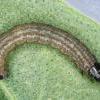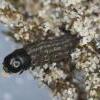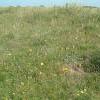35.095 Chionodes distinctella (Zeller, 1839)
Status and Distribution
Widely scattered throughout the British Isles; at best local but can be present in reasonable numbers at favoured sites. It occurs both inland and on the coast in central and southern England but elsewhere, in northern England, Wales, Scotland and Ireland, it is restricted to coastal locations and is very local.
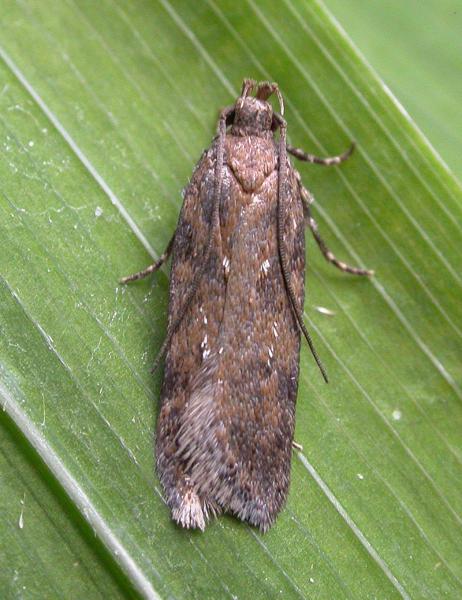
Provisional map
Foodplant and Larval Feeding Signs
Lotus corniculatus (bird's-foot-trefoil), Rumex acetosella (sheep's sorrel) and, probably, Hypochaeris radicata (cat's-ear) - Beavan & Heckford, 2014.
In Europe on Artemisia campestris (field wormwood) and a Rumex sp. (sorrel/dock).
When feeding on bird's-foot-trefoil, the larva spins a vertical silken tube in adjacent moss from which it feeds on the touching foodplant. When found one centimetre down in moss around sheep's sorrel there was no sign of spinning in the adjacent moss.
Finding the Moth
Larva: feeds within a sand-covered silken tube vertically attached to the moss Syntricha ruralis ssp. ruraliformis (sand-hill screw-moss) open at the upper end where the tube touches or is slightly attached to the upper leaves of bird's-foot-trefoil at a site in northern Scotland. Additionally in Norfolk within the moss Dicranum scoparium (broom fork-moss) about one centimetre below the surface, with no evidence of a silken tube and with sheep's sorrel growing amongst it. In captivity, the leaves of sheeps sorrel were eaten but the larvae were not observed feeding (Beavan & Heckford, 2014 and 2015).
The larva of Scythris picaepennis feed in a similar manner to that noted above on bird's-foot-trefoil, but examination of the head and prothoracic plate will suffice to separate the two. C. distinctella larva have a black head and prothoracic plate while the head of S. picaepennis is yellow with a brown hind margin and the prothoracic plate is blackish with the front margin yellow.
Adult: can be swept and disturbed from suitable habitat on warm days, comes to sugar and readily attracted to light. In Europe has been observed nectaring on ox-eye daisy.
Similar Species
Chionodes fumatella is generally a darker species with varying degrees of blackish speckling and up to three prominent spots. The black spot in the centre of the wing at one-third is often present in both species but is usually more obvious and larger in C. fumatella, this feature being further accentuated by the surrounding small patches of white scales. A few scattered white scales may occur in this area in C. distinctella but they are generally less extensive.
The colour and markings can vary quite considerably within C. distinctella, the forewing colour ranging from pale to dark brown sometimes without any contrasting areas and occasionally showing strongly contrasting patches of lighter ochreous and darker brown. This contrast can, on occasions, be found in C. fumatella and if there is any doubt then they are best separated by dissection (but see below). As C. distinctella is on the wing slightly earlier, dissection of any suspected C. fumatella in early or mid-June is probably advisable.
The uncus on the male genitalia of C. fumatella is narrower and has a short projecting thorn in the centre which can be seen under a microscope without a full dissection by brushing off the end scales from the abdomen.
Single brooded from late June to mid-August.
Earliest: 7th June 1948 (VC41)
Latest: 22nd August 1970 (VC85) and 2001 (VC28)

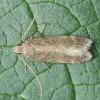

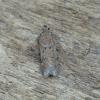
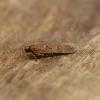


_0.jpg)
